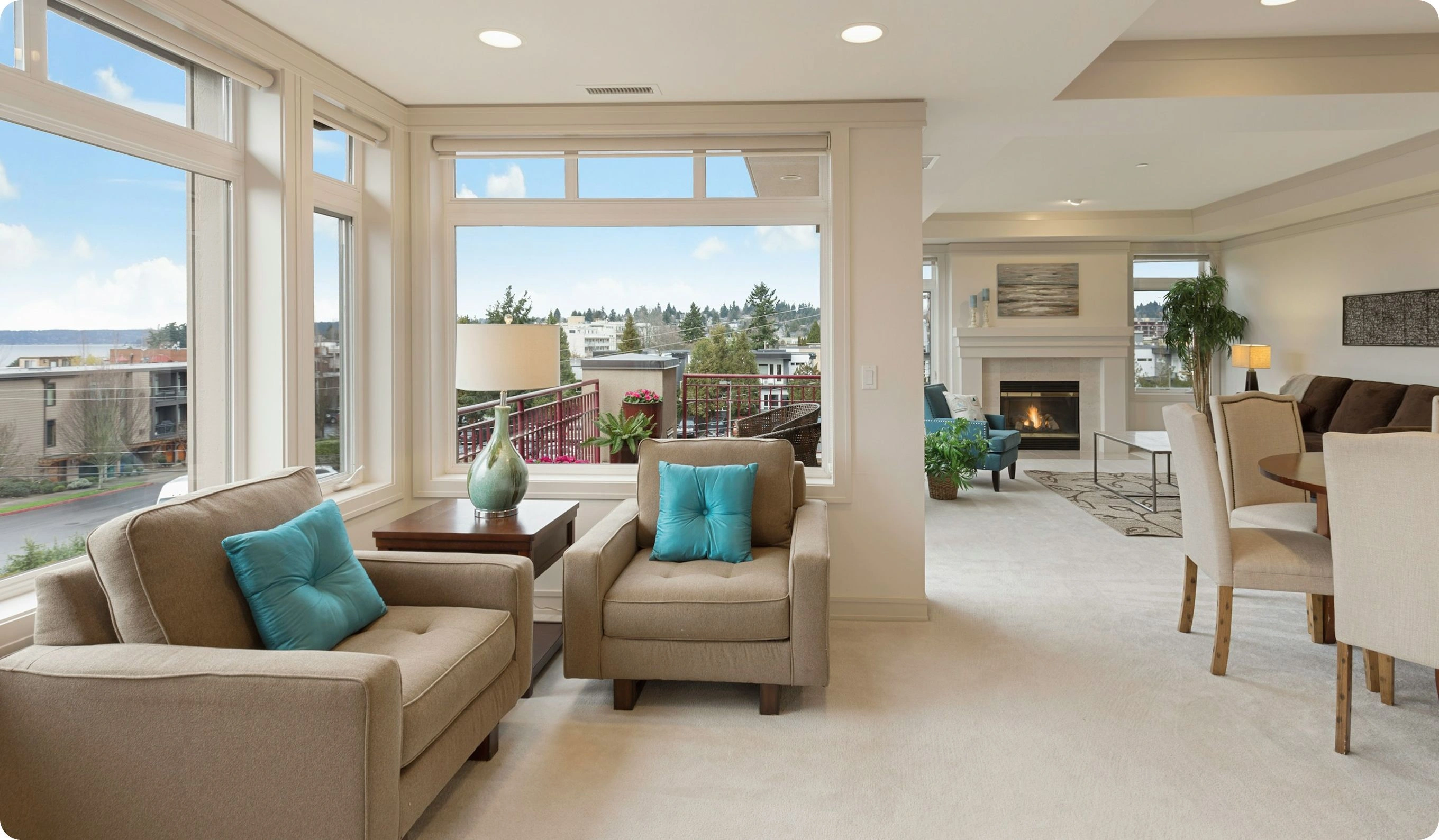Secondary real estate in HamiltonHousing near campusesmalls and calm streets

Best offers
in Hamilton
Benefits of investment in
New Zealand real estate
Global lifestyle destination with long-term value
New Zealand combines breathtaking nature, political stability, and one of the world’s highest quality-of-life rankings — factors that support resilient property demand.
Consistent market performance in core cities
Auckland and Wellington see steady appreciation and low vacancy, especially in family and professional rental segments.
Transparent ownership with legal clarity
Buyers benefit from clear title registration, strong rule of law, and institutional-grade property governance.
Global lifestyle destination with long-term value
New Zealand combines breathtaking nature, political stability, and one of the world’s highest quality-of-life rankings — factors that support resilient property demand.
Consistent market performance in core cities
Auckland and Wellington see steady appreciation and low vacancy, especially in family and professional rental segments.
Transparent ownership with legal clarity
Buyers benefit from clear title registration, strong rule of law, and institutional-grade property governance.

Useful articles
and recommendations from experts
Main title about secondary real estate in Hamilton
Why secondary properties attract buyers
Secondary real estate in Hamilton caters to buyers and investors seeking immediate usability, proven municipal services, and transparent returns. Unlike new-build developments that can incur build delays, cost overruns, and speculative timelines, pre-owned homes come with fully commissioned utilities—potable water from Waikato Regional Council, uninterrupted power via Contact Energy, mature sewage networks, and fiber-to-premises broadband—eliminating activation risks. Many residences preserve characteristic Kiwi architectural elements—weatherboard elevations, pitched roofs, and generous verandahs—while interiors have been comprehensively modernized with energy-efficient double glazing, bespoke open-plan kitchens featuring Fisher & Paykel appliances, reinforced subfloors engineered for seismic stability, and integrated smart-home systems controlling lighting, heating, and security. This turnkey readiness reduces carrying costs, accelerates rental cash flows, and allows investors or owner-occupants to occupy or lease from day one. Detailed historical sales data maintained by Land Information New Zealand provides robust comparables for valuation. With documented net rental yields averaging 5%–7% per annum in Hamilton’s key suburbs and strong tenant demand from university students, healthcare staff, and corporate relocations, secondary acquisitions deliver both lifestyle appeal and quantifiable financial performance underpinned by VelesClub Int.’s end-to-end advisory services.
Established neighbourhoods
The Hamilton secondary-market landscape is anchored by several mature suburbs, each offering distinct lifestyle and investment advantages. Chartwell, perched on the western hills, features mid-century weatherboard homes and townhouses with panoramic river and city views—many have been refitted with designer kitchens, tiled ensuites, and landscaped courtyards. Rototuna, Hamilton’s fastest-growing suburb, offers low-rise apartment complexes and family villas within walking distance of shopping centres and schools, all benefiting from sealed road networks and integrated cycleways. Hamilton East, adjacent to the University of Waikato and Waikato Hospital, comprises renovated villa residences and character flats—complete with heritage features such as high ceilings and native timber floors—modernized for contemporary living with underfloor heating and Wi-Fi connectivity. The riverbank precincts of Fairfield and Frankton combine refurbished riverside apartments with townhouses near the Victoria Street railway overbridge, prized for commuter links and event-driven short-term lets. Emerging pockets along the northern Cambridge Road corridor, in suburbs like Mysterton and Pukete, see older family homes repurposed into duplex rentals, driven by transport upgrades and proximity to the Waikato Expressway. Across all areas, essential services—sealed arterials, consistent Council water mains, reliable electricity, and scheduled bus and train routes—operate seamlessly, ensuring minimal post-purchase capital outlay and swift integration into Hamilton’s well-established urban fabric.
Who buys secondary real estate
Hamilton’s secondary real estate market attracts a broad spectrum of buyers aligned with varied objectives. University students and faculty at the University of Waikato lease studios and one-bedroom apartments in Hamilton East and Dinsdale, drawn by fully furnished turnkey layouts, inclusive utility bundles, and direct shuttle connections. Local middle-income families acquire three- to four-bedroom homes in Chartwell and Flagstaff, prioritizing established school zones—such as Hillcrest High and Rototuna Junior—and community-driven facilities like libraries, aquatic centres, and weekend farmers’ markets. Healthcare professionals and corporate executives relocating for roles at Waikato Hospital, Synergy Health, or Fonterra secure modern townhouses and riverfront flats in central Frankton and Fairfield, valuing minimal commute times and premium on-site amenities. Expatriate investors from Australia, the UK, and Asia target multi-unit complexes in Rototuna and Te Rapa for yield-focused strategies, leveraging documented occupancy rates and exit guidance from VelesClub Int. Short-stay holiday operators acquire Hamilton Gardens precinct apartments for event-driven rental spikes tied to national floral festivals. Across all segments, unified drivers are immediate readiness, transparent title histories, and integration into mature infrastructure networks that mitigate operational risk and underpin predictable returns.
Market types and price ranges
Hamilton’s secondary real estate spectrum spans a wide continuum of property types and price brackets. Entry-level one-bedroom flats and compact studios in Dinsdale, Riverlea, and Melville start from approximately NZD 300,000 to NZD 450,000, offering basic modern finishes, onsite parking, and proximity to bus corridors servicing the CBD and airport. Mid-range two- to three-bedroom terrace houses and apartments in Chartwell, Fairfield, and Hillcrest trade between NZD 500,000 and NZD 800,000, featuring granite kitchen worktops, renovated bathrooms, secure garages, and private garden courtyards. Premium character villas and luxury townhouse suites in Hamilton East, Rototuna, and Flagstaff command NZD 850,000 to over NZD 1.5 million, driven by plot size, period detailing, bespoke interior fittings, spa-style bathrooms, and elevated river-valley vistas. For portfolio-oriented buyers, small multi-unit blocks (4–8 units) in Frankton and Rototuna list between NZD 1 million and NZD 2 million, delivering diversified rental streams, scale economies, and professional property management setups. Mortgage options through ANZ, Westpac, and BNZ provide competitive rates (4%–5% per annum) with typical deposit requirements of 20%–30%. Net rental yields average 5%–7% per annum across core corridors, bolstered by stable tenant demographics and low vacancy—benchmarks integrated into VelesClub Int.’s bespoke financial modelling and acquisition planning tools.
Legal process and protections
Acquiring secondary real estate in Hamilton follows New Zealand’s transparent conveyancing framework under the Property Law Act and Land Transfer Act. Transactions begin with a written Agreement for Sale and Purchase and payment of a 10% deposit held in the vendor’s lawyer trust account. Buyers commission due diligence: valuation (as per Reserve Bank guidelines), LIM (Land Information Memorandum) report from Hamilton City Council confirming zoning and services, and building inspections covering structural integrity, timber-frame durability, and methamphetamine residue tests where required. Upon satisfactory due diligence, parties execute the final Sale and Purchase Agreement; the balance is transferred on settlement day. Title transfer is processed via the Landonline system at LINZ, with a nominal transfer fee. Mortgage financing through major banks requires a property valuation, income verification, and usually a 20% deposit. Statutory warranties under the Consumer Guarantees Act and protections for latent defects under the Property Law Act safeguard buyers against concealed issues. VelesClub Int. co-ordinates all legal, financial, and administrative steps—due diligence management, contract drafting, bank liaison, and settlement logistics—ensuring compliance, risk mitigation, and a seamless closing experience for both local and international clients.
Best areas for secondary market
Certain Hamilton sub-markets stand out for their blend of service maturity, lifestyle offerings, and rental performance. Chartwell’s hillside precincts remain top-ranked, combining panoramic views, established retail hubs, and high occupancy from families and retirees. Rototuna’s network of modern suburbs offers turnkey apartment complexes and gated villa estates with reliable yields and strong capital-growth forecasts. Hamilton East and Fairfield deliver character home conversions and river-valley flats near major employers and transport interchanges, sustaining yields above 5%. Flagstaff and Hillcrest provide high amenity density—schools, parks, and libraries—ensuring stable family tenancy. Frankton’s mixed-use blocks near the airport and Waikato Stadium suit short-term and corporate tenants, while emerging corridors along Te Rapa Road benefit from industrial-zone expansions and retail precinct developments. Each micro-market features sealed roads, Council water services, reliable electricity, integrated public transit (bus and rail) and proximity to healthcare and education facilities. VelesClub Int.’s proprietary neighbourhood-scoring methodology and field research guide clients to sub-markets optimally aligned with yield targets, capital-growth forecasts, and lifestyle preferences in Hamilton’s dynamic secondary real estate ecosystem.
Why choose secondary over new + VelesClub Int. support
Choosing secondary real estate in Hamilton delivers immediate possession, proven infrastructure, and documented performance histories—advantages seldom matched by off-plan developments. Buyers circumvent consenting delays, developer premiums, and construction uncertainties by selecting turnkey assets with established utility networks and transparent title records. Secondary properties often showcase authentic Kiwi architectural details—weatherboard façades, verandah profiles, and mature landscaping—that new builds cannot replicate, enhancing character and desirability. Lower entry premiums relative to pre-construction offerings free up capital for interior personalization, energy-efficiency upgrades, or geographical portfolio diversification across Hamilton’s suburbs. Mature neighbourhood services—reliable Council water, stable Contact Energy grids, sealed roads, extensive bus and rail links, and high-speed broadband—ensure seamless move-in and minimal post-purchase maintenance. VelesClub Int. enriches this acquisition journey through comprehensive end-to-end expertise: sourcing exclusive off-market listings, conducting exhaustive due diligence, negotiating optimal terms, and managing all legal and financial formalities. Our post-closing property management solutions—tenant placement, preventive maintenance coordination, and transparent performance reporting—optimize occupancy rates and preserve capital. Through ongoing portfolio monitoring, quarterly market reviews, and strategic advisory, VelesClub Int. empowers clients to maximize Hamilton’s secondary real estate potential with confidence, clarity, and operational efficiency.
